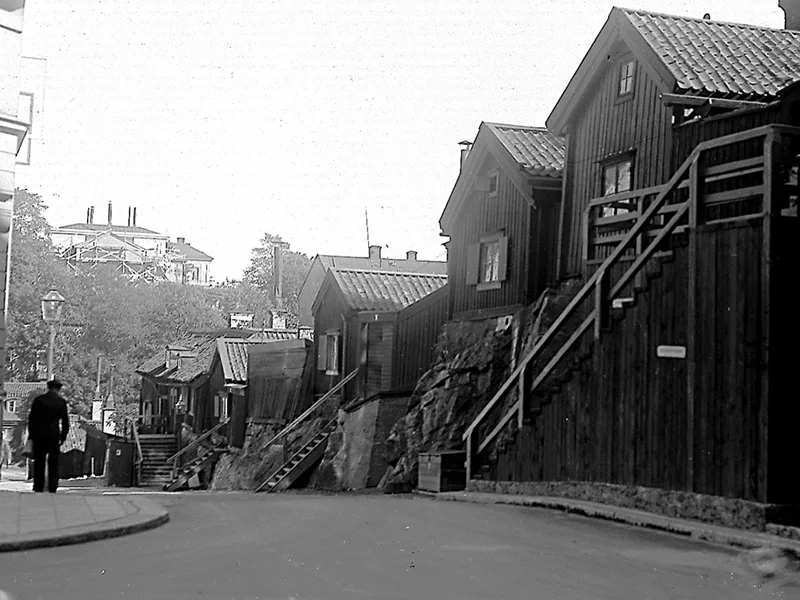Saltsjöbaden's history
Saltsjöbaden's history
Stockholm is growing
As a result of the latter half of the 19th century being marked by a rapidly growing population in Stockholm, intensive construction began to take off and several villa towns around the city began to emerge.
The working class crowded into the shantytowns of the inner city, while the more affluent middle class began to move out of the city. New housing ideals and inadequate sanitary conditions were more of a cause than the lack of housing. Photographer: Erik Holmberg/ Maritime Museum

As a result of the latter half of the 19th century being marked by a rapidly growing population in Stockholm, intensive construction began to take off and several villa towns around the city began to emerge.
The working class crowded into the shantytowns of the inner city, while the more affluent middle class began to move out of the city. New housing ideals and inadequate sanitary conditions were more of a cause than the lack of housing. Photographer: Erik Holmberg/ Maritime Museum
The Saltsjöbaden business idea
The business idea Saltsjöbaden arose when financier KA Wallenberg and industrialist Ernest Thiel were on holiday with their families at the popular seaside resort of Trouville-sur-Mer in northwestern France. They were fascinated by the lively French coast with its beautiful houses, restaurants, railways and stately hotels. The inspiration led to the idea of building an equally charming seaside resort back home in Stockholm.
Discussions were ongoing and it is widely known that KA Wallenberg's half-brothers Gustaf, Oscar and Marcus strongly disagreed about carrying out the project. They believed that it was too great a financial risk.
Saltsjöbaden hinged on a bet between the Wallenberg brothers and Ernest Thiel. Knut Agathon Wallenberg invited everyone to his summer house on Djurgården where he came up with the brilliant idea of a competition. Whoever jumped the furthest into the water from the roof of the bathing house would get to decide whether the project would be carried out. Ernest Thiel, who, together with Knut, was one of the most driven, took the plunge and jumped the furthest. Thus, the plans were put into action and soon the people of Stockholm would have an exclusive seaside resort to travel to enjoy salty baths, scenic surroundings and fresh air.
Now it was a matter of finding the right location to build on. Initially, they found a suitable area on the Baltic Sea coast in Tyresö parish, but then they received a tip about Nacka parish and an area between Baggensfjärden, Lännerstasundet and Erstaviken. It is said that the location with the most hours of sunshine was a decisive factor and on July 4, 1889, KA Wallenberg signed the contract for a purchase price of 250,000 SEK. Shortly afterwards, the application to build a railway was also signed. At the time of the land purchase, approximately 75 people were living in the densely forested area with deep valleys, mountain peaks and fault escarpments that eventually came to be called Saltsjöbaden .
Image below: Illustration of the railway around the turn of the century.